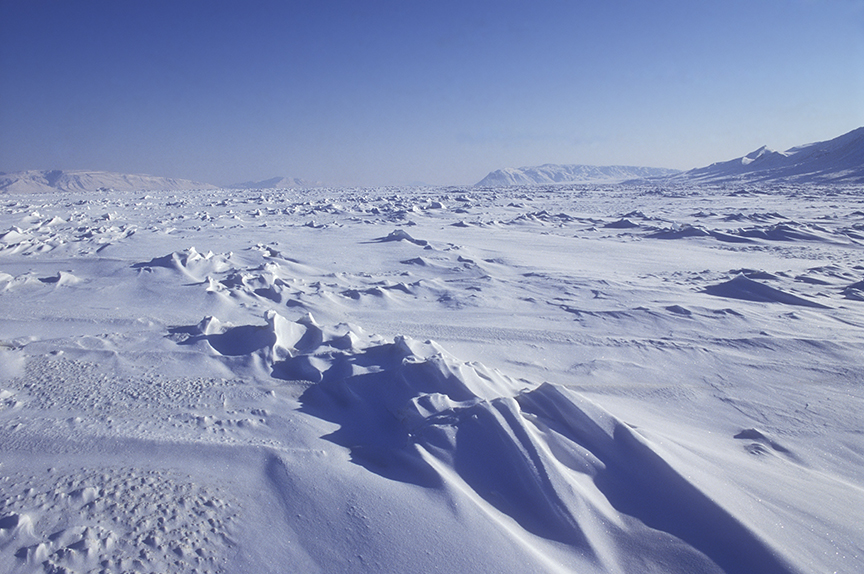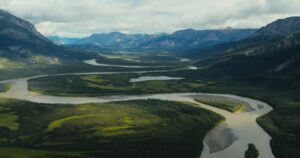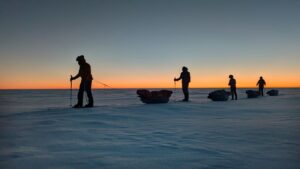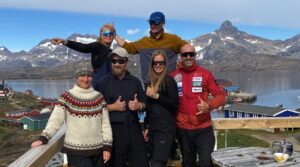While the North Pole station of Barneo isn’t operating (again), expedition activity hasn’t slowed in northern Canada and Greenland. An insurer agreed to meet the Greenland government’s new requirements, salvaging the adventure season on the world’s largest island.
Ellesmere Island
Borge Ousland and Vincent Colliard are in Iqaluit, getting ready to attempt the first unsupported north-south crossing of Ellesmere Island. They plan to depart from Cape Columbia and head south over the island’s three main ice caps in mid-April.
Canadians Ray Zahab and Kevin Vallely are over three weeks into their sled journey from the little weather station of Eureka, on the island’s northwestern side, to the hamlet of Grise Fiord in the south. Their route has been a mixture of overland and sea ice travel, and the pair look to be closing in on Grise Fiord within the next week.
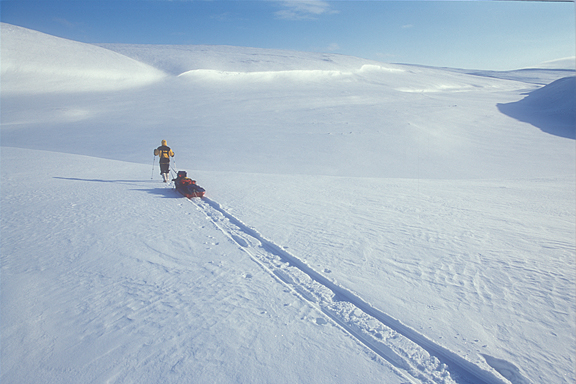
An overland route to Grise Fiord, from a past expedition. Photo: Jerry Kobalenko
Northwest Passage
The Spanish team of Jose Trejo, Sechu Lopez, and Francisco Mira are three days into their sled journey to Gjoa Haven. After spending the last 10 days in Resolute awaiting delayed equipment and gathering advice from locals about crossing the Barrow Strait, they were warned against attempting the crossing due to open water. As a result, the team flew 137km on April 6 to Cape Prince on Prince of Wales Island to start there instead of Resolute. This will presumably reduce their route to around 600km.

The Spanish Northwest Passage teams charter flight is shown in the middle map image, with the now adapted route now shown in the map on the far right, between the second and third circles. Photo: mardehielo2025.com
Norwegian Anders Brenna, from Oslo, is roughly 18 days into his solo 1,100km manhaul from Gjoa Haven to Glenelg Bay on northern Victoria Island. He is currently on the southwestern side of King William Island, having traveled across the sea ice from his starting point on the southeastern side.
Briton Preet Chandi completed her training last month in the Lancaster Sound area, in preparation for a possible solo expedition to the North Pole, depending on future funding. Details on the goals or outcomes of the training remain limited.
Baffin Island
The British team of Tom Harding, Ben James, Leanne Dyke, and James Hoyes are in Pangnirtung, for a skiing and climbing expedition in the region north of the small Inuit community. Their goal is to explore several remote areas, with a focus on two main climbing objectives. A local outfitter is due to transport them 60km by snowmobile, after which they plan to traverse the mountains east of the Weasel River Valley. They had to abort their snowmobile journey yesterday, as bad weather turned them back to Pangnirtung.
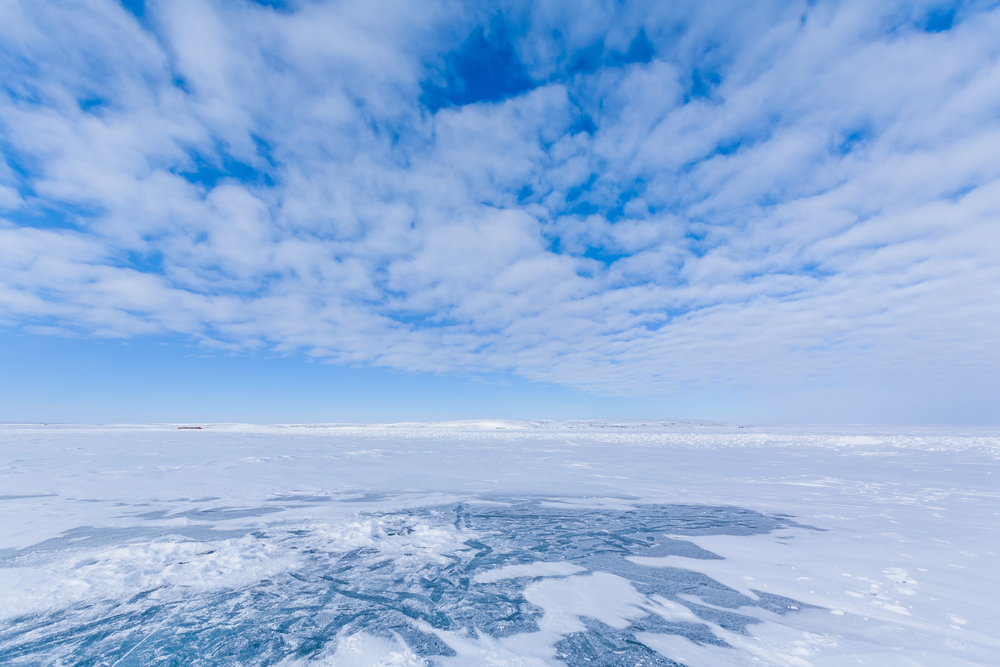
Great Slave Lake, the start point for Rotmo and Randulf’s journey. Photo: Shutterstock
Northwest Territories
Norwegians Bengt Rotmo and Randulf Valle are 15 days into their 700+ km sled journey from near Yellowknife, Northwest Territories, to Kugluktuk on Nunavut’s western coast. Departing on March 25 from the northwest end of Great Slave Lake, the pair report traveling through forests and frozen lakes along a remote winter road. Early highlights include wolf tracks and steadily improving snow conditions.
Now into the tundra, the snowpack has firmed. The experienced pair are in between Great Slave and the coast, heading north amid mild temperatures above 0˚C.
Ungava Peninsula
Canadian Dave Greene and his partner are now 19 days into their ski expedition across Quebec’s Ungava Peninsula. As of April 7, they have covered 253km, but their original 543km route from Akulivik to Kangirsuk has changed. A fuel leak in their sleds spoiled some of their food, so Greene and partner have shortened their route to 400km and will now finish in Kangiqsujuaq.
The pair report temperatures dropping below -40˚, strong winds, and occasional blizzards. Daily distances have ranged from 16 to 23km.
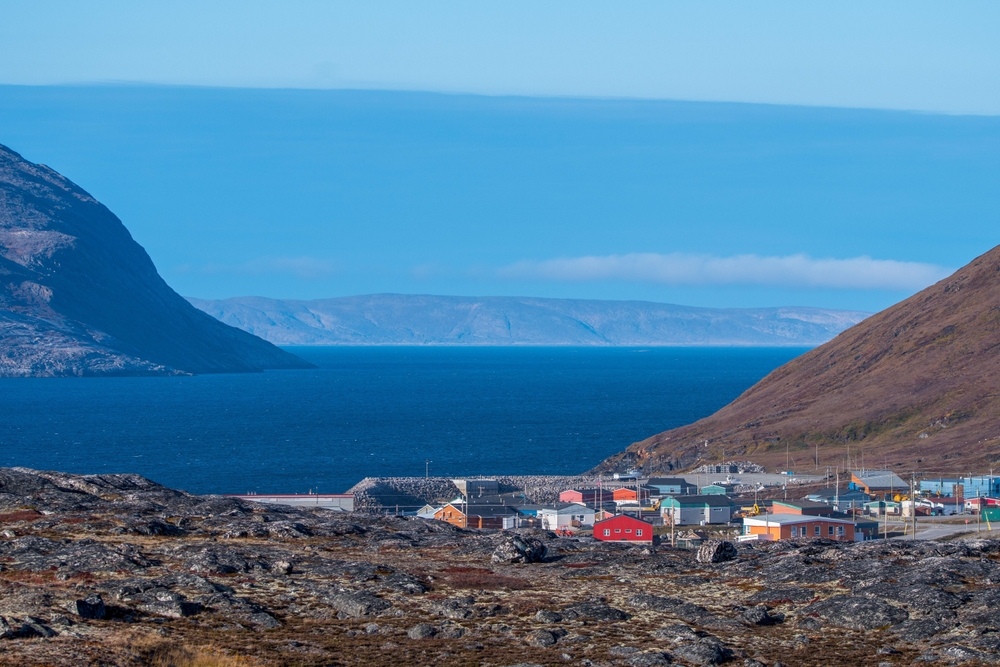
The village of Kangiqsujuaq. Photo: Shutterstock
Samuel Lalande-Markon and Marie-France L’Ecuyer are 23 days into a 400 km, 30-day ski expedition across Quebec’s Ungava Peninsula from Akulivik to Kangiqsujuaq. After arriving in Akulivik on March 14, the pair began their journey on March 16 despite strong winds and cold temperatures. As they left the coastline and moved into the interior, they encountered rising plateaus and increasingly cold, damp conditions.
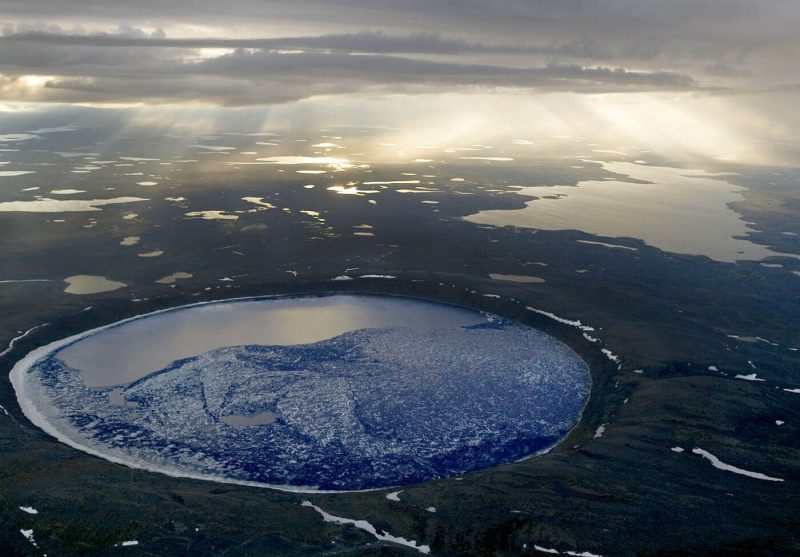
Pingualuit Crater. Photo: mybestplace.com
By the second week, they had reached the Puvirnituq River. Along the way, they passed several archaeological sites and took advantage of occasional clear weather to make solid progress. Entering Pingualuit National Park, the team took a short break to explore the area, including the Pingualuit Crater, a striking meteorite impact site. Now well over halfway through their route, Lalande-Markon and L’Ecuyer continue their push east toward Kangiqsujuaq.
Elsewhere, Kathleen Goulet, Chantal Secours, Julie Gauthier, and Roxanne Chenel have successfully finished their 650km ski expedition from Schefferville to Kangiqsualujjuaq, retracing a canoe route along the Rivière de Pas and the George River. Further details about their journey are awaited.
Greenland
A French insurer has saved this year’s Greenland icecap expeditions from cancellation due to new insurance regulations but at the cost of significantly higher premiums.
Japanese arctic adventurer Yasu Ogita was in Nuuk yesterday as he prepared for a 400km ski journey from Siorapaluk, the northernmost village in both Greenland and the world to the historically important Cape Inglefield region and back.
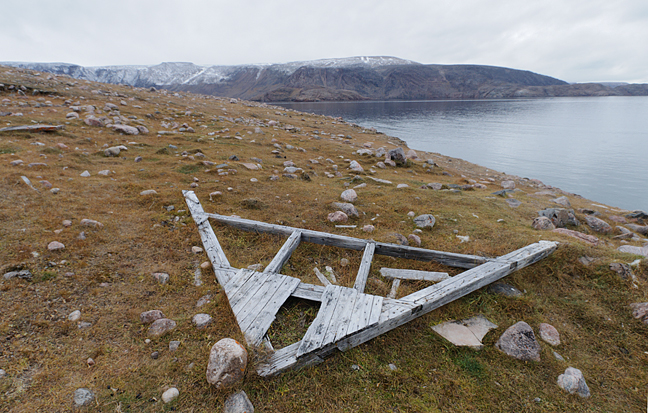
Ogita’s route will take him near the abandoned outpost of Etah, shown above in summer. Etah was a hub for polar explorers well into the 20th century. The gable is part of the house built by the 1934-5 Oxford University Expedition. Photo: Jerry Kobalenko
